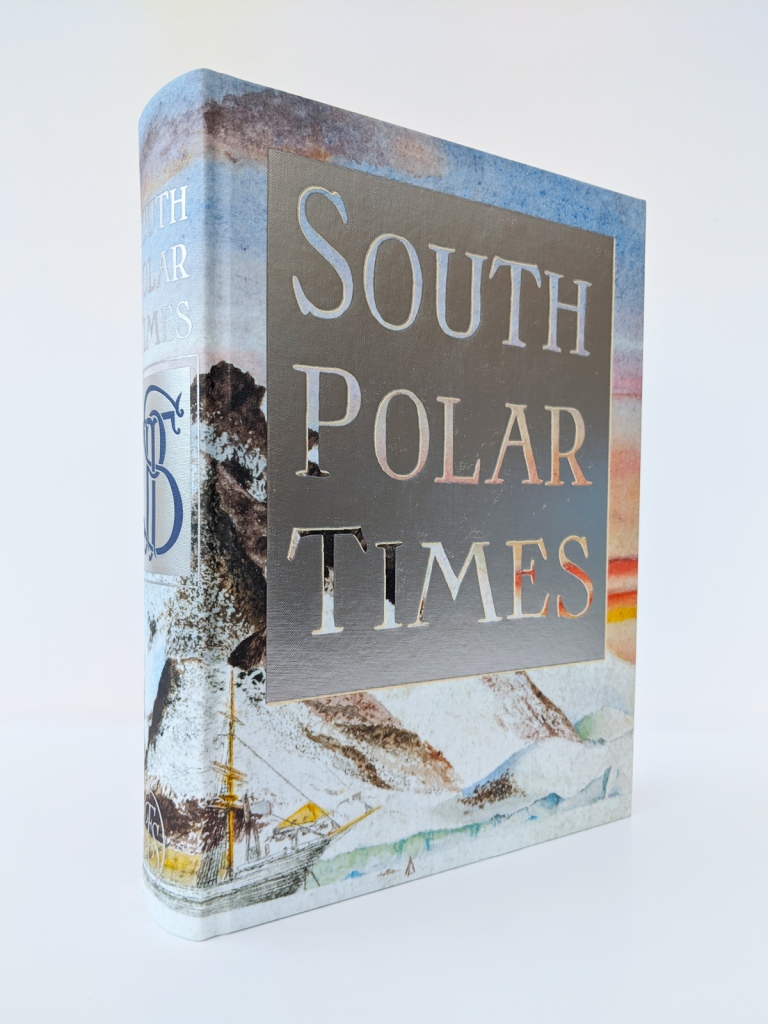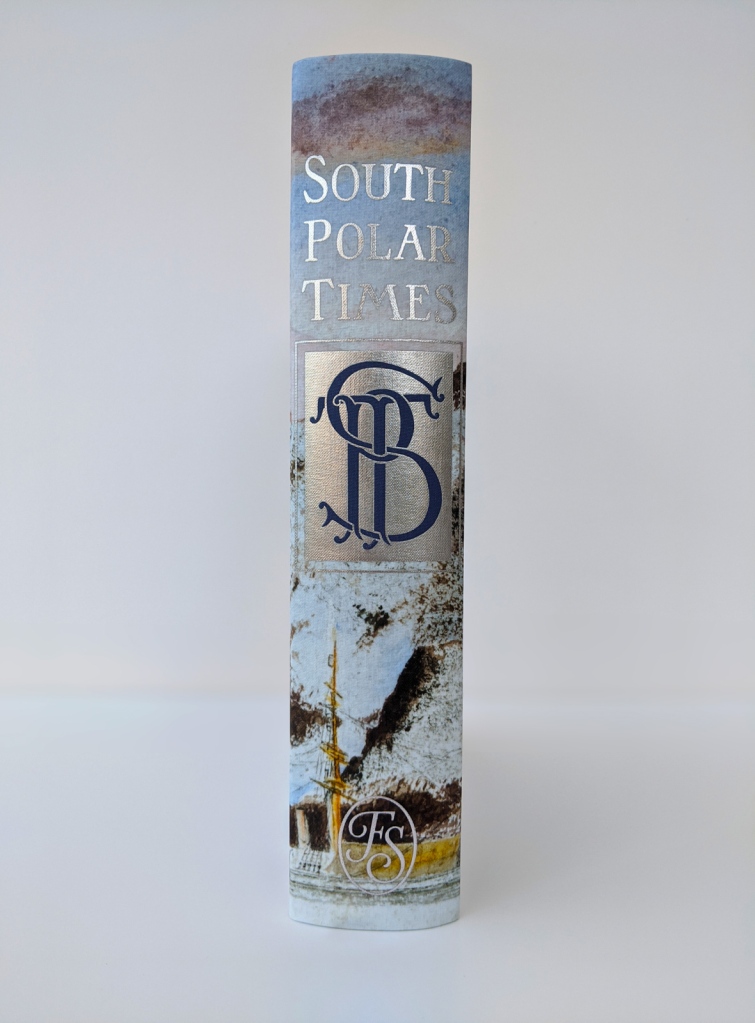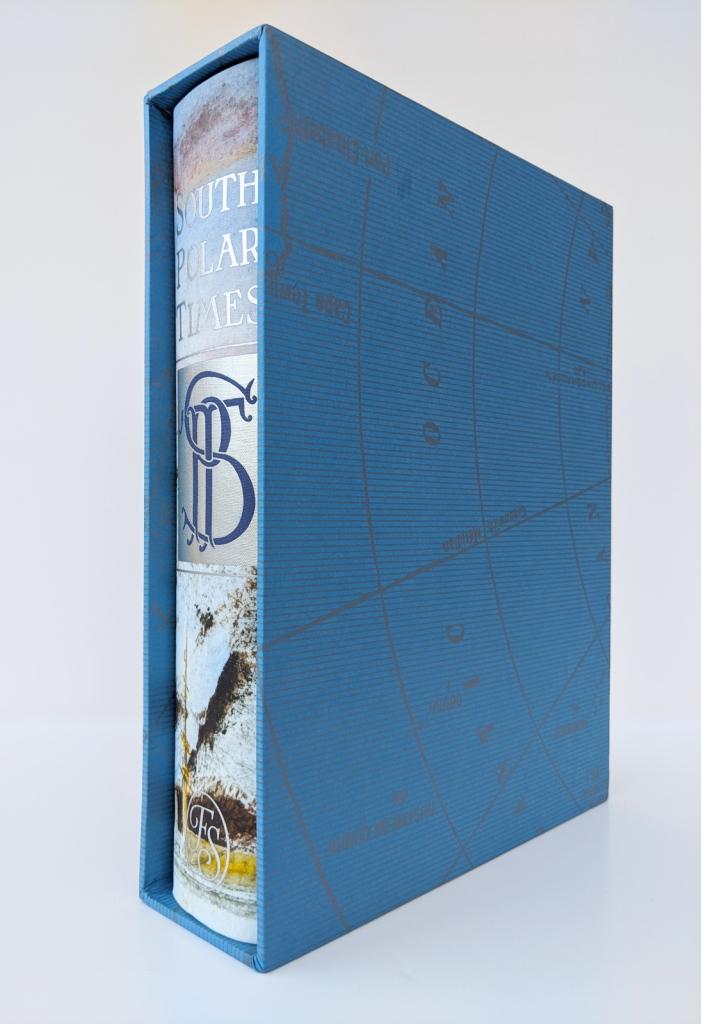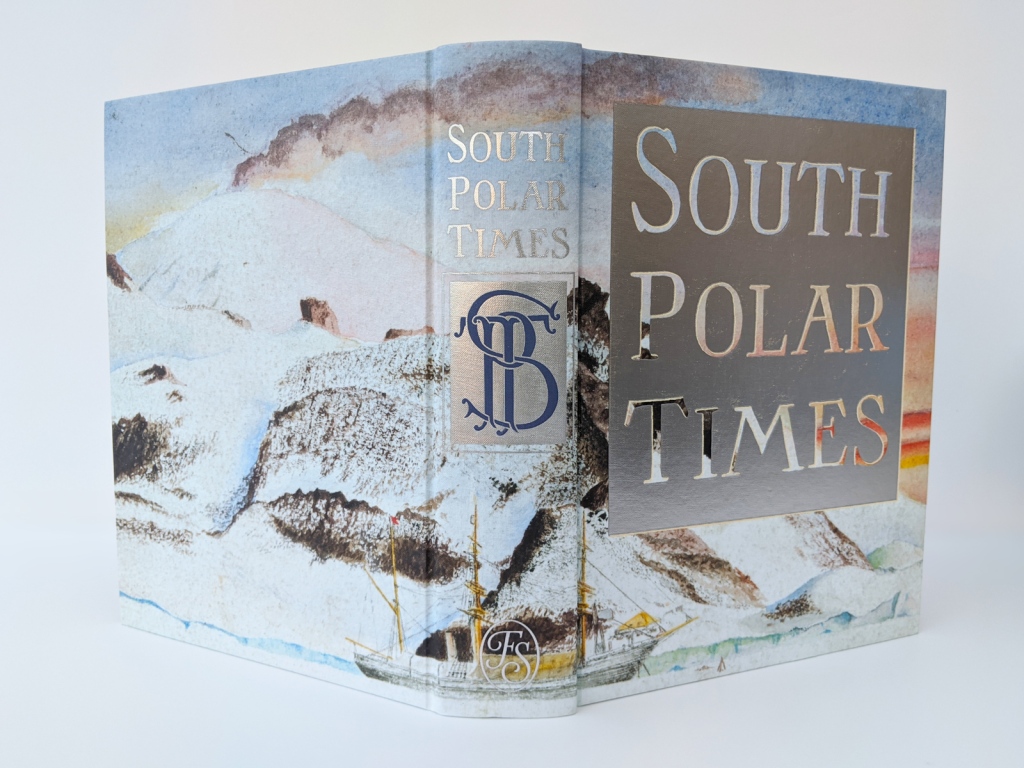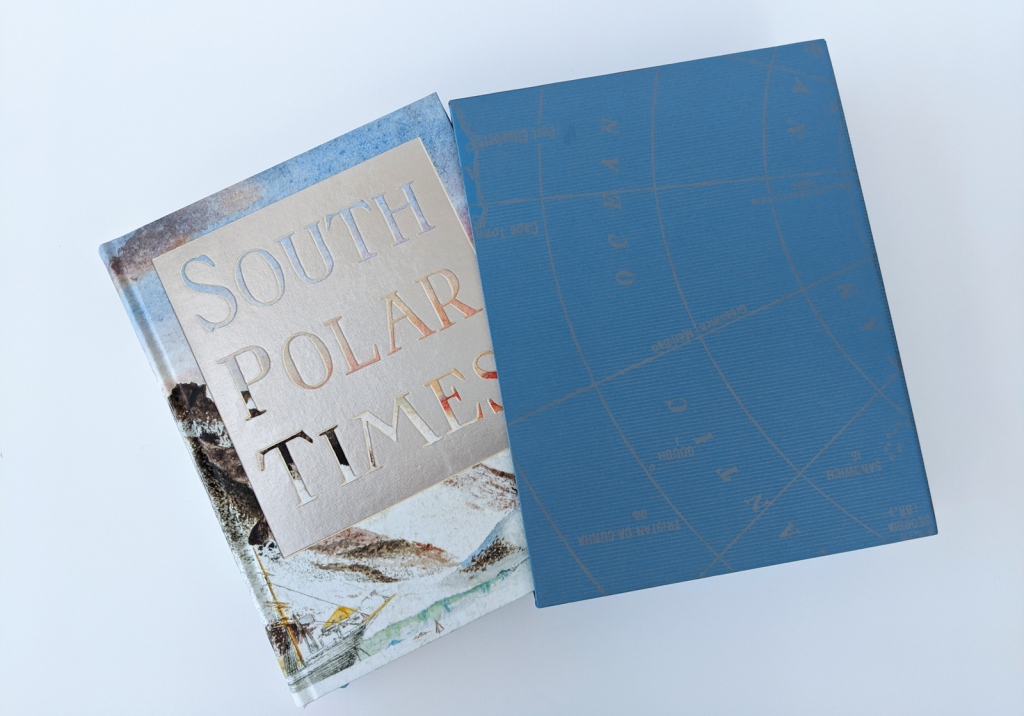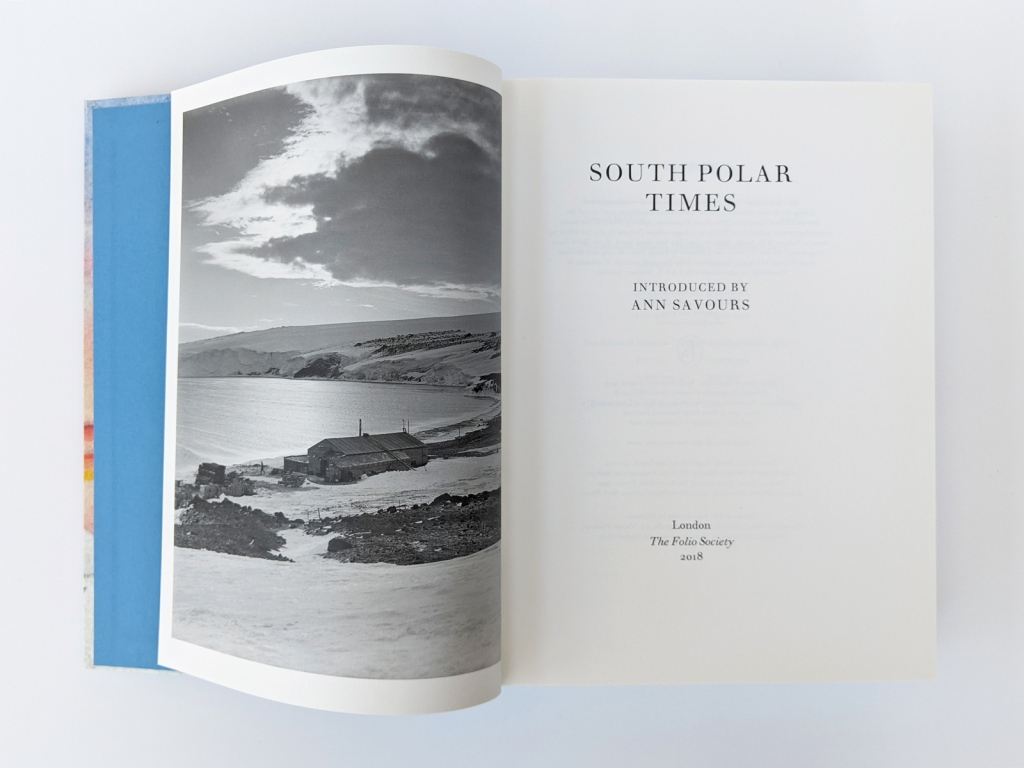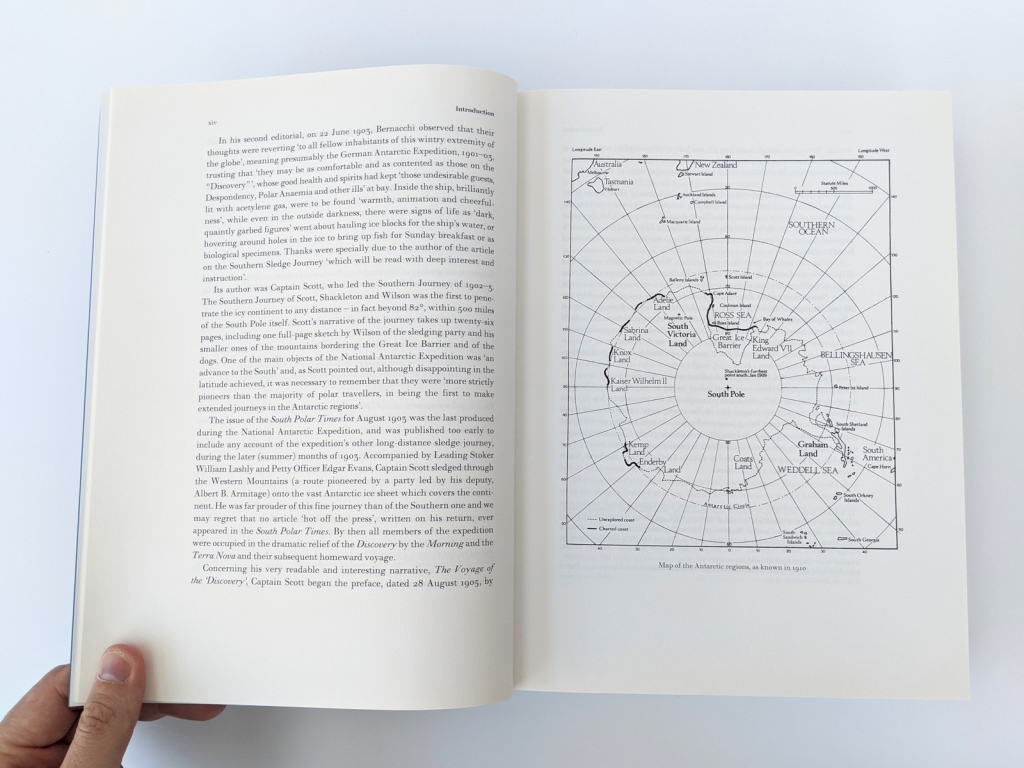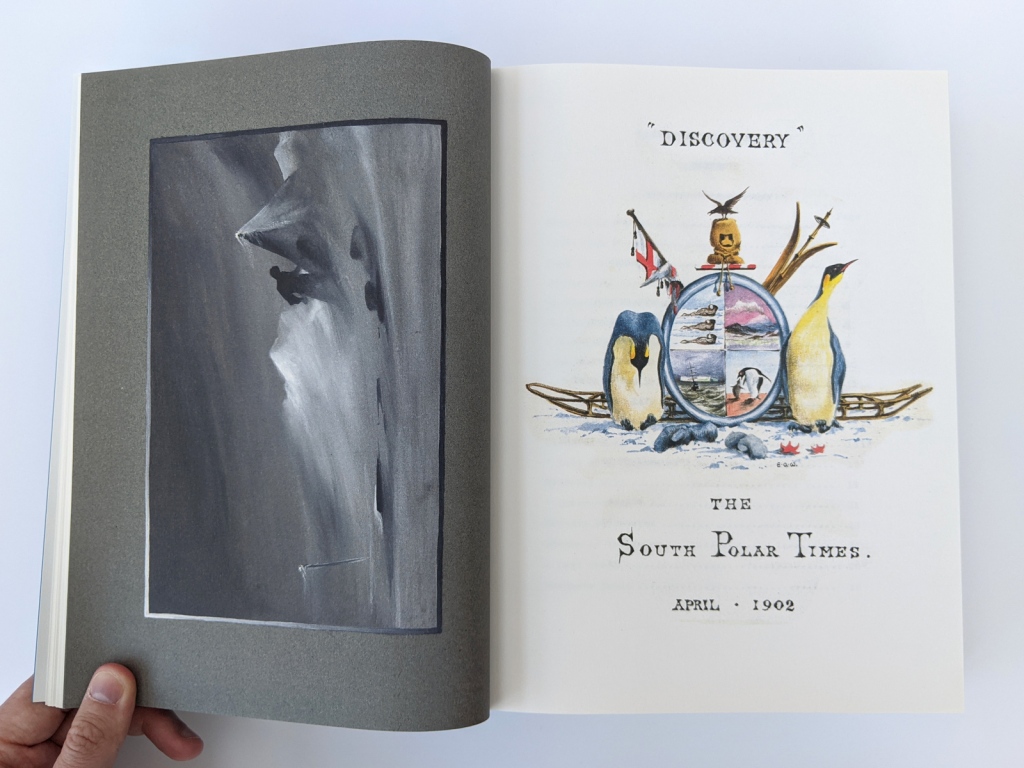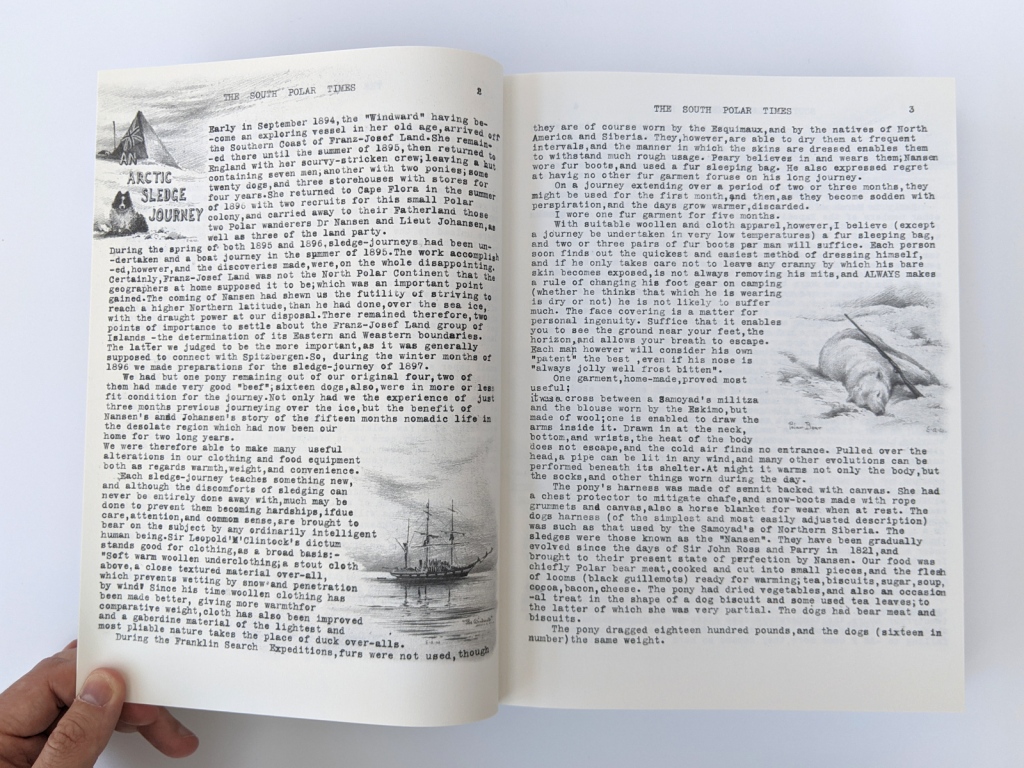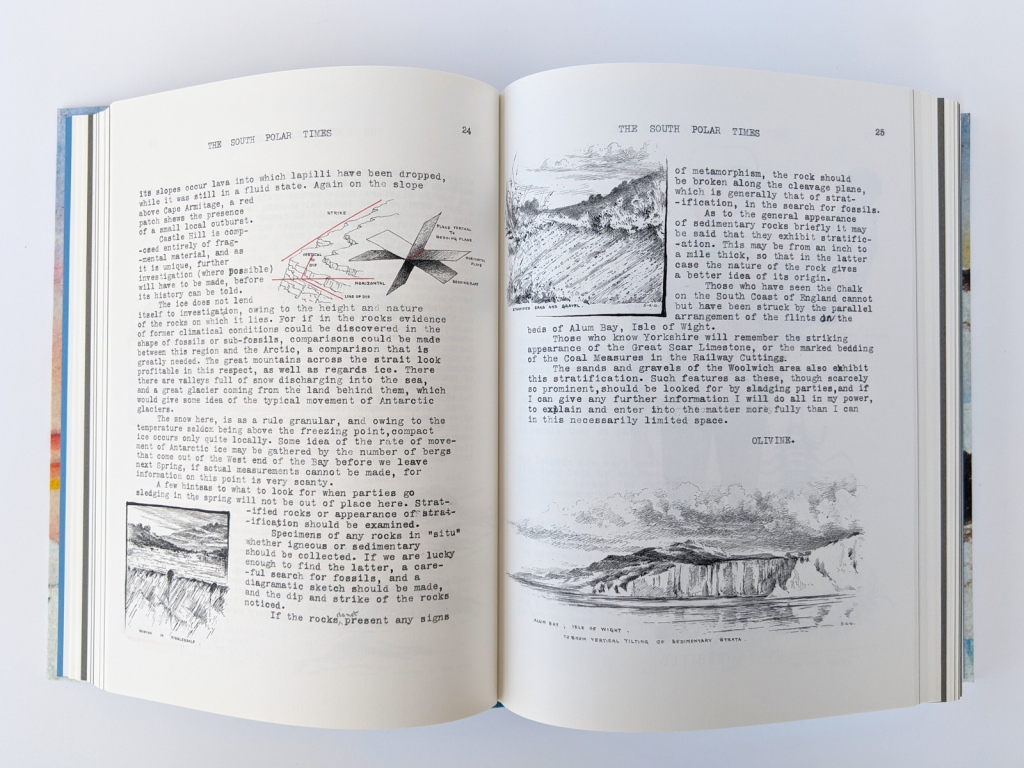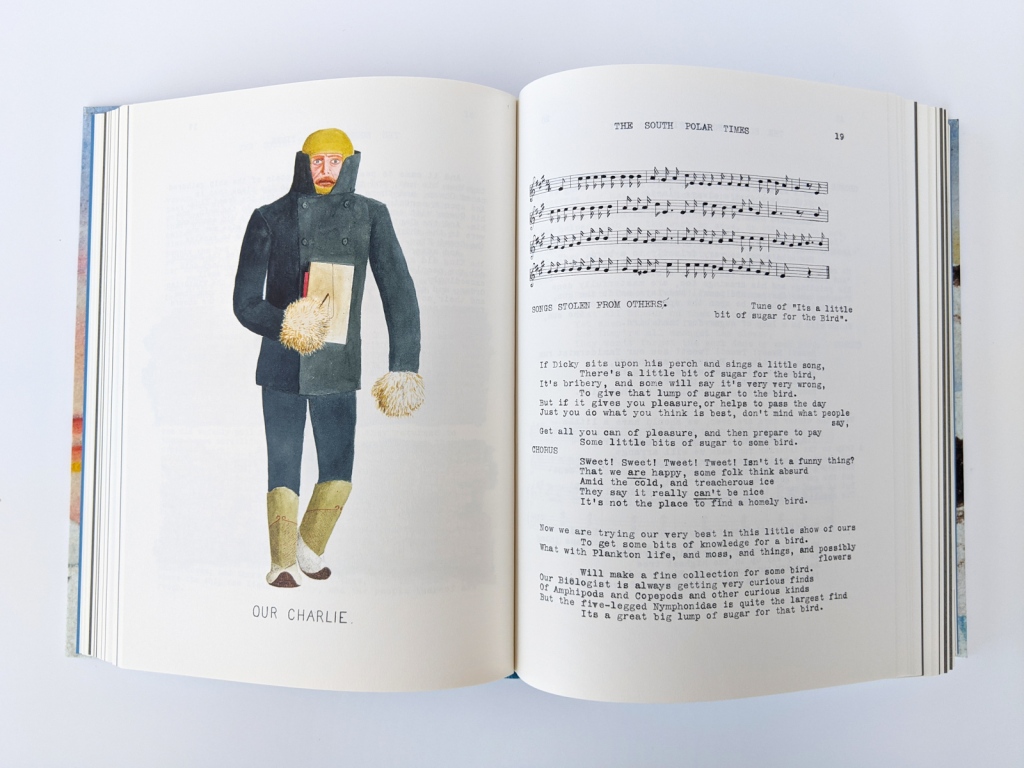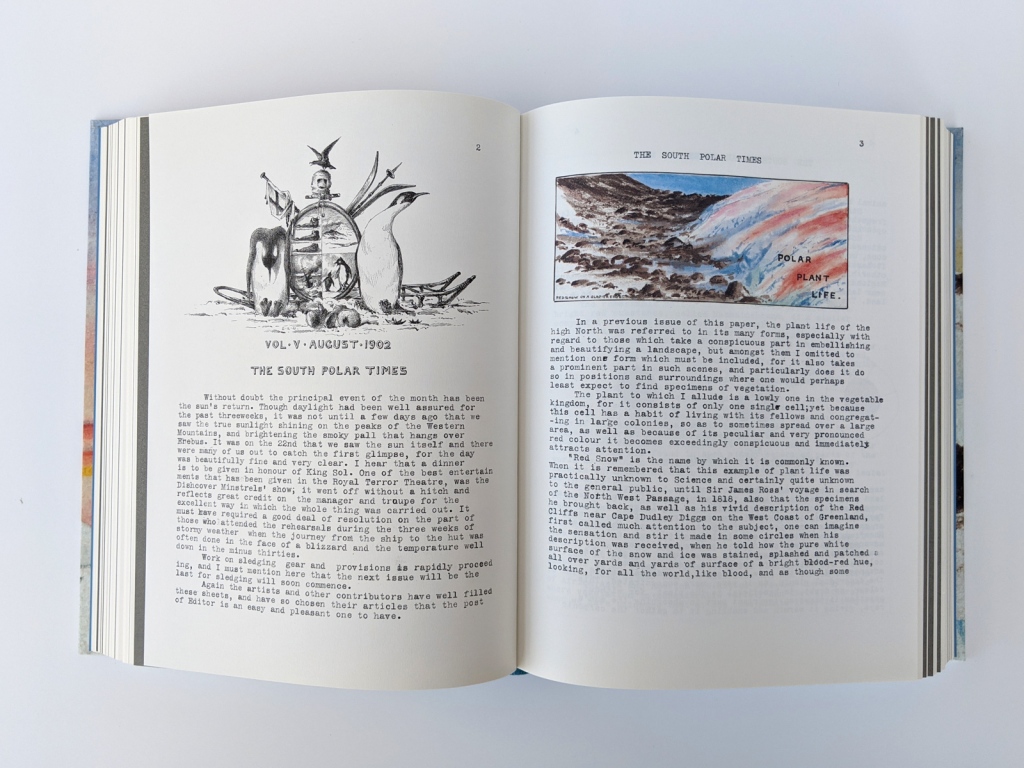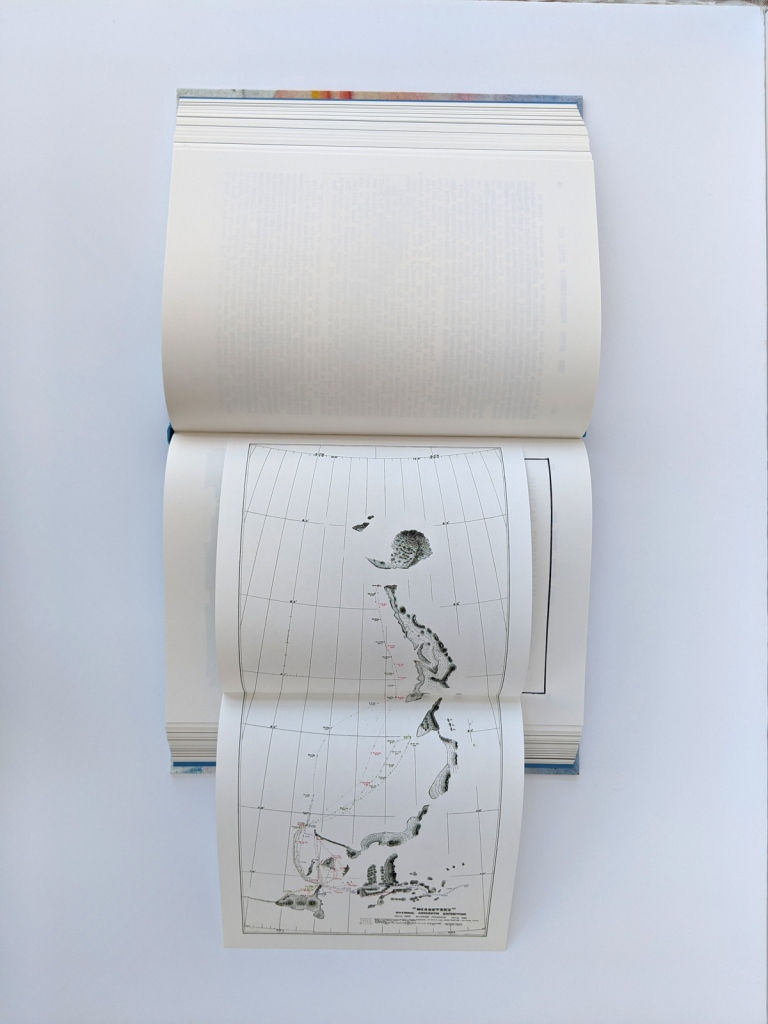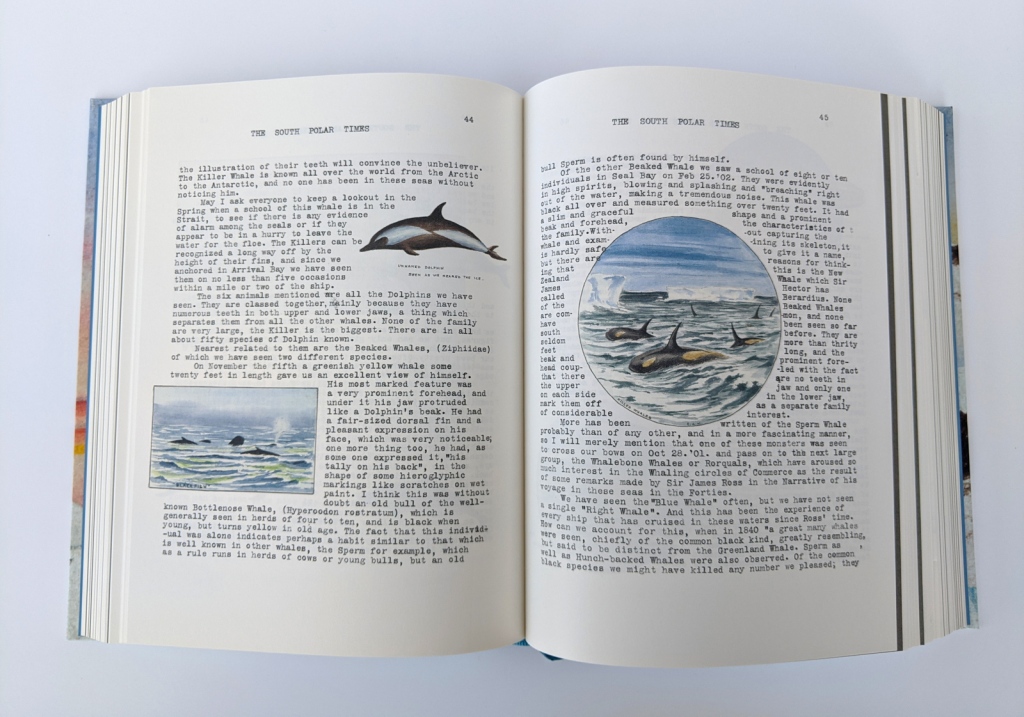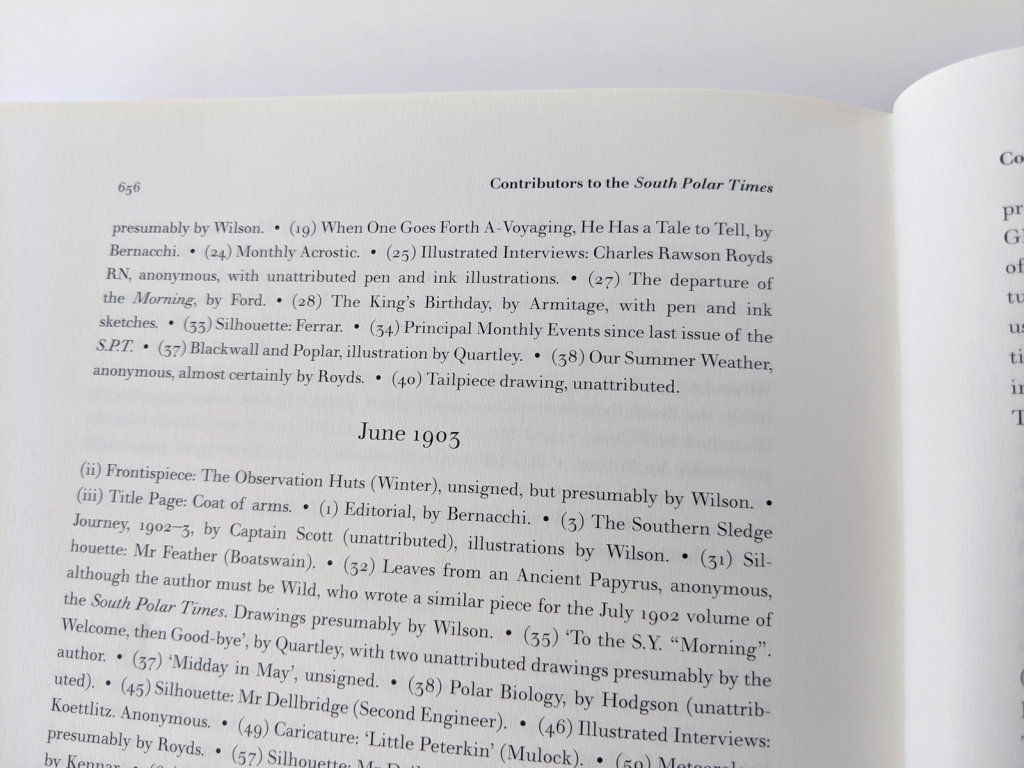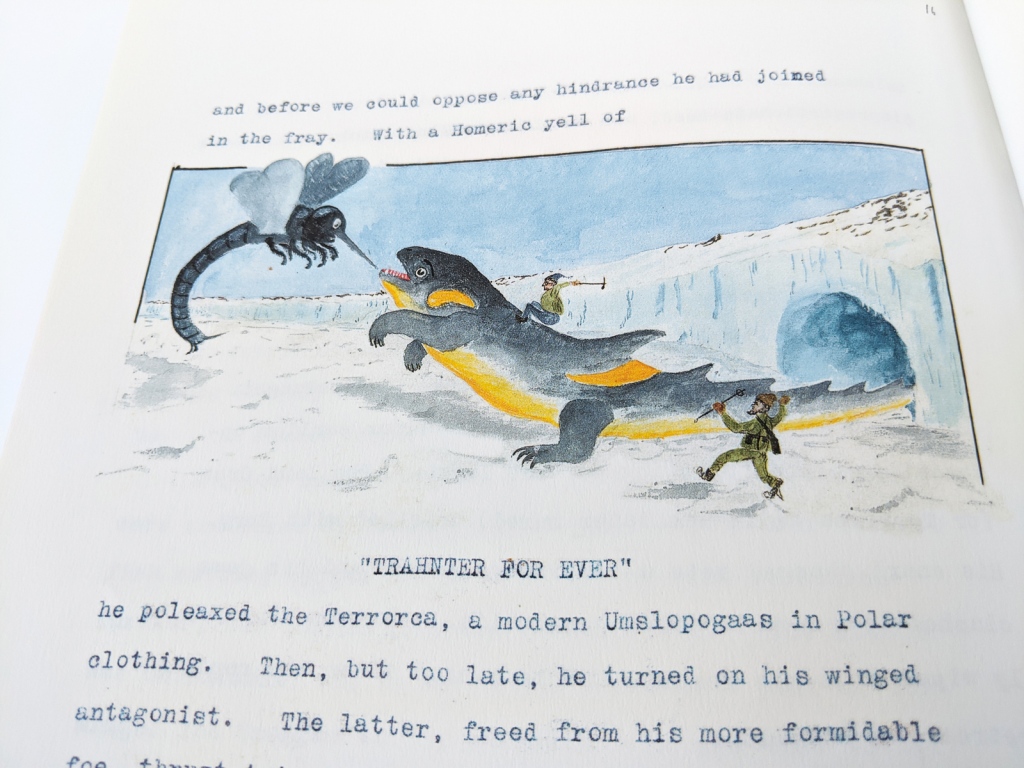Join the crew of the British National Antarctic Expedition in this intimate glimpse into the age of discovery at the edge of the world.
Folio Society; 2018; xxvi, 659pp; 4to (280x220x60mm); 3.2kg; bound in printed and blocked cloth; in printed slipcase; colour illustrations throughout; integrated ribbon marker.
The Discovery Expedition (1901–1904) and the ill-fated Terra Nova Expedition (1910–1913) were two British scientific and exploratory expeditions to the Antarctic led by famed explorer Robert Falcon Scott. The crews of these expeditions were obliged to endure long periods of cold and isolation in relatively primitive conditions. In part to provide them with an entertaining distraction, it was undertaken to publish a periodical journal—the South Polar Times—to which all members of the expedition were invited to contribute. The result was twelve issues that offered an intimate glimpse into life on the Antarctic Expedition and the personalities of those involved. In 2012 the Folio Society published a limited (to 1,000 copies) edition facsimile of each of the twelve issues, presented in a box along with a commentary volume. This was followed by a new, single-volume, non-limited edition in 2018. It is this latter volume I’ll look at here.
The book arrives in a blue slipcase printed with a silvery grey design based on a 1920 map of the South Pole. The case is made from thick stock and feels robust (as it needs to, given the book’s substantial size and 3.2kg mass). The volume is bound in cloth-covered boards printed with a wraparound design based on a watercolour painting made by Edward Wilson during the 1902 expedition. The title is blocked on the cover in a very substantial silver design, and again on the spine where it is paired with an SPT motif. Combined with the scale of the book, it makes for quite a striking and impressive presentation.
The binding is sewn with blue head and tail bands and a matching blue ribbon marker. The end papers are also (plain) blue. Because the book is so substantial, you’ll want to lay it on a table or other surface—this isn’t one to read in bed!
The text of the introduction and end matter is set in Walbaum, but be aware that about 95% of this book is comprised of photographic reproductions of the original pages of the South Polar Times. Not having had access to the latest desktop publishing software, the crews of the National Antarctic Expedition should be forgiven for producing these pages by typewriter. The paper is Stucco Old Mill, a paper with a satin finish and very slight texture. It’s a clever choice because it strikes a good balance between presentation of text and of images, of which there are very many indeed. Almost all of the books approximately 350 double-page spreads have at least one illustration, and often several. It’s very difficult to find a page of this edition that is not interesting to photograph. There are a few photographs and maps, but most of the illustrations are contemporary sketches, drawings, and watercolour paintings made by the crews to illustrate the journal. These range from sober technical diagrams to illustrate a scientific principle or a careful observation of a biological sample, to entirely whimsical illustrations of the inevitable high jinks of the crew. These often quirky, hand-made illustrations lend the volume (and those whosee lives it describes) a tremendous degree of personality.
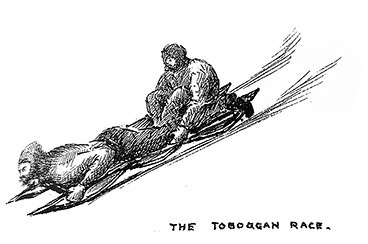
The book opens with an introduction by Ann Savours who provides some historical context on the expeditions and particularly on the circumstances under which the Times was written. This includes interesting diary excerpts recounting the production of content for the journal. There’s also a map of the Antarctic regions as known in 1910.
What follows are photographic reproductions of all twelve issues of the South Polar Times. The content is extremely eclectic, encompassing scientific observation of phenomena and and wildlife, meteorological accounts, account of dinner table conversations, verse, musical scores, and stories of how the men of the expedition spent their time. Its an incredibly intimate account of the National Antarctic Expedition that is in some respects strikingly modern, while in others perfectly encapsulating a very particular time in the age of discovery. To know the ultimate fate of this undertaking makes it all the more poignant. ■
Where to buy
- At the time of writing, this edition is still available direct from the Folio Society.
- You can search for the Folio Society South Polar Times on eBay US* or eBay UK*.
* denotes an affiliate link

